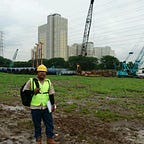Looking at Indonesia’s Inequality through Four Simple Maps
Indonesia has an undeniable inequality problem. Credit Suisse reported in 2016 that almost half of nation’s wealth is controlled by the richest 1 percent. Latest report from Oxfam also confirms this by saying that the four richest man in Indonesia own as much wealth as the poorest 100 million populations.
Beside the massive gap between the rich and the poor, other inequality problem that we often hear is the inequality between the western part and eastern part of the country or the inequality between Java and the rest of the country. In this article, the author will present four simple maps that will highlight those inequalities.
Inequality usually measured by three metrics: income, consumption, and wealth; and the classical method to illustrate it is with GINI coefficient. But, in this occasion, the author will use different sets of data that will highlight the disparities between different parts of our country: poverty rate, under-five mortality rate, access to electricity, and Human Development Index.
Difference in poverty rate among different parts of a country is an indication of income disparity. From the map above, we can see that provinces with high poverty rate are mostly located in eastern part of the country. Meanwhile, all provinces in the island of Java, Borneo, and Bali only have under 15% of its population under poverty line.
Inequality between western and eastern part of the country can also be viewed clearly in map above. Under-five mortality rate in all provinces in the western part of the country are below 60, while the rate in majority of provinces in the eastern part are above 60 with two provinces in Papua scoring above 100. Those high mortality rates are probably caused by poor economic condition that in turn led to malnutrition and ultimately health problems. High under-five mortality rate can also indicate the availability and accessibility of health care in the eastern part of the country, especially in Papua, is still low.
Stark contrast is also shown in the map above. All provinces in the island of Sumatra, Java, and Bali have 95% of its household electrified, while a lot of provinces in other island are still far from fully electrified. Papua once again ranked last with only 50.9% of its household has access to electricity.
Human Development Index (HDI) combines indicators like life expectancy, education, and per-capita income to measure the development of a country or of an area. HDI offer a sneak-peek to the quality of education, health service, and economic condition of an area. From the map, we can see that the HDI of provinces in western part of Indonesia is relatively higher than their counterparts in the east. The province with the highest HDI is Special Capital Region of Jakarta with 79.6, while the province with the lowest HDI is Papua with the score of 58.05.
Bridging the gap
Jokowi administration seems to know that inequality is a serious problem that has to be quickly addressed. In Nawacita, his priority agenda, one of the points included by Jokowi is ”to develop Indonesia from the peripheral area through reinforcing local governments and villages in a unitary state framework.” With that priority agenda, Jokowi looks set to erase the image of Java-centrist development from previous administrations.
From the three years of his administration, there are some commendable efforts that seem consistent with his priority. One of them is his aggressive push for infrastructure projects outside Java, biggest examples are Trans-Papua road project and Trans-Sulawesi railway project. Those transportation infrastructures are vital for rural areas, because a good transportation infrastructure will have huge effects in decreasing logistical cost, increasing productivity, lowering the prices of goods, and in general improving the economic condition of rural areas.
Improving transportation, health service, and education infrastructure is only the first step in a journey to close the inequality gap. It will take many years before we can finally close that gap for good, but it is crucial for us to start now, one step at a time.
